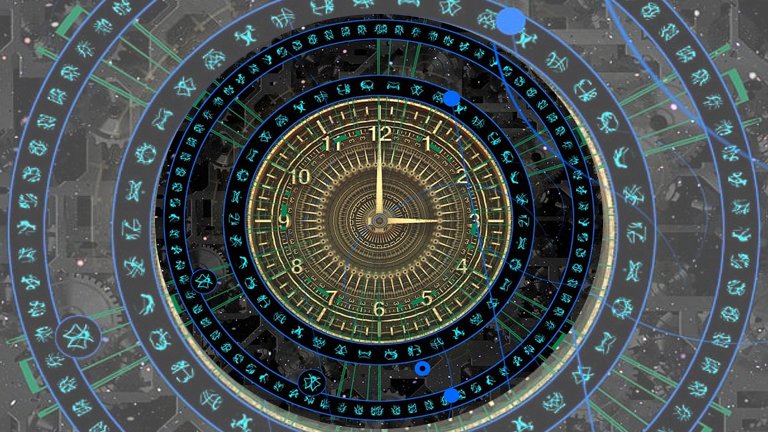Quantum Entanglement: The Spooky Action at a Distance
Quantum entanglement is one of the most intriguing and perplexing phenomena in quantum mechanics, often described by Albert Einstein as “spooky action at a distance.” It refers to a situation where particles become interconnected in such a way that the state of one particle instantaneously influences the state of another, regardless of the distance separating them. This non-local interaction defies classical intuition and has profound implications for our understanding of the universe. Quantum entanglement is not only a fundamental concept in quantum theory but also a key resource for emerging technologies such as quantum computing, quantum cryptography, and quantum teleportation.
Foundations of Quantum Mechanics
To fully appreciate quantum entanglement, it is essential to understand the basic principles of quantum mechanics. Quantum mechanics is the branch of physics that deals with the behavior of particles on the atomic and subatomic scales, where the classical laws of physics no longer apply. Key concepts in quantum mechanics include wave-particle duality, superposition, and uncertainty.
Wave-Particle Duality
Wave-particle duality is the concept that particles, such as electrons and photons, exhibit both wave-like and particle-like properties. This duality is best illustrated by the famous double-slit experiment, which demonstrates that particles can interfere with themselves, a behavior characteristic of waves.
Superposition
Superposition is the principle that a quantum system can exist in multiple states simultaneously until it is measured. For example, an electron in a superposition state can be in multiple positions or possess multiple energies at once. The act of measurement causes the system to collapse into one of its possible states.
Uncertainty Principle
The uncertainty principle, formulated by Werner Heisenberg, states that it is impossible to simultaneously know both the position and momentum of a particle with perfect accuracy. This inherent uncertainty is a fundamental aspect of quantum systems.
The Concept of Quantum Entanglement
Quantum entanglement arises when particles become correlated in such a way that the state of one particle cannot be described independently of the state of another. This phenomenon occurs as a result of interactions that cause particles to share a common quantum state. Once entangled, the particles remain connected, even when separated by vast distances.
Historical Background
The concept of quantum entanglement dates back to the early days of quantum mechanics. In 1935, Albert Einstein, Boris Podolsky, and Nathan Rosen published a paper known as the EPR paradox, which challenged the completeness of quantum mechanics. They argued that quantum mechanics could not be a complete theory because it allowed for instantaneous correlations between entangled particles, seemingly violating the principle of locality (the idea that objects are only influenced by their immediate surroundings). This paper sparked a debate that has continued for decades.
Bell’s Theorem and Experimental Tests
The theoretical foundation of quantum entanglement was significantly advanced by John Bell in 1964. Bell’s theorem provided a way to test the predictions of quantum mechanics against those of local hidden variable theories, which suggest that particles have predetermined properties that are revealed upon measurement.
Bell’s Inequality
Bell derived an inequality, now known as Bell’s inequality, that places limits on the correlations predicted by local hidden variable theories. Quantum mechanics, however, predicts correlations that can violate Bell’s inequality. This violation serves as a test for the presence of entanglement and the non-local nature of quantum mechanics.
Experimental Verification
The first experimental tests of Bell’s inequality were conducted by Alain Aspect and his colleagues in the 1980s. These experiments demonstrated violations of Bell’s inequality, providing strong evidence for the existence of quantum entanglement and the validity of quantum mechanics over local hidden variable theories. Subsequent experiments have continued to confirm these results with increasing precision and over larger distances.
Properties and Types of Quantum Entanglement
Quantum entanglement is a complex and multifaceted phenomenon with several distinct properties and types. Understanding these properties is crucial for harnessing entanglement in practical applications.
Bipartite and Multipartite Entanglement
Entanglement can occur between two particles (bipartite entanglement) or among multiple particles (multipartite entanglement). Bipartite entanglement is the simplest and most well-studied form, where two particles become entangled in a shared quantum state. Multipartite entanglement, on the other hand, involves complex correlations among three or more particles and is essential for certain quantum computing and communication protocols.
Entanglement Entropy
Entanglement entropy is a measure of the degree of entanglement in a quantum system. It quantifies the amount of information shared between entangled particles. Higher entanglement entropy indicates a stronger and more complex entanglement.
Entanglement Monogamy
Entanglement monogamy refers to the principle that if two particles are maximally entangled, they cannot be entangled with a third particle. This property is crucial for ensuring the security of quantum cryptographic protocols, as it limits the ability of an eavesdropper to gain information about the entangled particles.
Applications of Quantum Entanglement
Quantum entanglement is not just a theoretical curiosity; it has practical applications in various fields, particularly in emerging quantum technologies. These applications exploit the unique properties of entanglement to achieve tasks that are impossible or infeasible with classical systems.
Quantum Computing
Quantum entanglement is a key resource for quantum computing, a paradigm that leverages the principles of quantum mechanics to perform computations more efficiently than classical computers. In quantum computers, entangled qubits (quantum bits) can represent and process information in ways that classical bits cannot. This capability enables quantum computers to solve certain problems, such as factoring large numbers and simulating quantum systems, exponentially faster than classical computers.
Quantum Gates and Algorithms
Entanglement is essential for the operation of quantum gates, the basic building blocks of quantum circuits. Quantum gates manipulate entangled qubits to perform complex operations. Quantum algorithms, such as Shor’s algorithm for factoring and Grover’s algorithm for database searching, rely on entanglement to achieve their speedups over classical algorithms.
Quantum Cryptography
Quantum entanglement provides the foundation for quantum cryptography, which aims to create secure communication systems that are immune to eavesdropping. One of the most well-known quantum cryptographic protocols is Quantum Key Distribution (QKD), specifically the BB84 protocol.
Quantum Key Distribution (QKD)
QKD uses entangled particles to generate shared secret keys between two parties, known as Alice and Bob. The security of QKD is guaranteed by the principles of quantum mechanics. Any attempt by an eavesdropper (Eve) to intercept the key will disturb the entangled state, alerting Alice and Bob to the presence of eavesdropping and ensuring the security of the communication.
Quantum Teleportation
Quantum teleportation is a process that uses entanglement to transfer the quantum state of a particle from one location to another without physically transmitting the particle itself. This phenomenon was first demonstrated experimentally in 1997 by a team led by Anton Zeilinger.
The Process of Quantum Teleportation
Quantum teleportation involves three main steps:
- Entanglement Creation: Two particles are entangled and distributed to two locations, typically referred to as Alice’s and Bob’s labs.
- State Measurement: Alice performs a joint measurement on one of her entangled particles and the particle whose state she wants to teleport. This measurement projects the state onto a new entangled state and provides classical information.
- State Reconstruction: Alice sends the classical information to Bob, who uses it to apply a specific quantum operation to his entangled particle, recreating the original quantum state.
Quantum teleportation has potential applications in quantum communication and quantum computing, enabling the transfer of quantum information across distances.
Challenges and Open Questions
Despite significant progress in understanding and utilizing quantum entanglement, several challenges and open questions remain. Addressing these challenges is crucial for advancing quantum technologies and deepening our understanding of the fundamental nature of the universe.
Decoherence and Environmental Noise
One of the main challenges in harnessing quantum entanglement is decoherence, the process by which quantum systems lose their coherence due to interactions with their environment. Decoherence can destroy entanglement, making it difficult to maintain and manipulate entangled states over long periods and distances. Developing methods to protect and preserve entanglement in noisy environments is an active area of research.
Scalability
Scaling up quantum systems to involve large numbers of entangled particles is another significant challenge. Many practical applications of quantum entanglement, such as large-scale quantum computing and quantum networks, require robust entanglement among many particles. Researchers are exploring various approaches, including error correction codes and novel materials, to achieve scalable entanglement.
Fundamental Questions
Quantum entanglement also raises fundamental questions about the nature of reality and the limits of quantum mechanics. For instance, the phenomenon challenges our classical intuitions about locality and causality. Some researchers are investigating alternative interpretations of quantum mechanics, such as the Many-Worlds Interpretation and Bohmian Mechanics, to provide different perspectives on entanglement.
Recent Advances and Future Directions
Recent advances in both theoretical and experimental research have pushed the boundaries of what we can achieve with quantum entanglement. These advances are paving the way for future breakthroughs in quantum technologies and our understanding of the quantum world.
Advances in Quantum Communication
Researchers have made significant progress in developing quantum communication networks that leverage entanglement to enable secure and efficient information transfer. Quantum repeaters, which use entanglement swapping to extend the range of quantum communication, are a key component of these networks. Demonstrations of entanglement over long distances, including satellite-based experiments, are bringing global quantum communication closer to reality.
Quantum Entanglement in Condensed Matter Physics
Quantum entanglement is increasingly important in condensed matter physics, particularly in the study of quantum phase transitions and topological states of matter. Understanding the entanglement properties of these systems can reveal new insights into their behavior and lead to the discovery of novel materials with unique properties.
Entanglement in Quantum Biology
Emerging research suggests that quantum entanglement may play a role in biological processes, such as photosynthesis and bird navigation. These studies, which bridge the gap between quantum physics and biology, open new interdisciplinary research avenues and may lead to practical applications in medicine and bioengineering.
Quantum entanglement, often described as one of the most mysterious and fascinating aspects of quantum mechanics, continues to captivate scientists and researchers. Its implications stretch from the foundational understanding of the universe to practical applications in quantum computing, cryptography, and communication. While significant challenges remain, ongoing research and technological advances are steadily unlocking the potential of entanglement, heralding a new era of quantum innovation. As we continue to explore and harness the power of quantum entanglement, we are likely to uncover even more profound insights and transformative technologies, fundamentally changing the way we understand and interact with the world.


